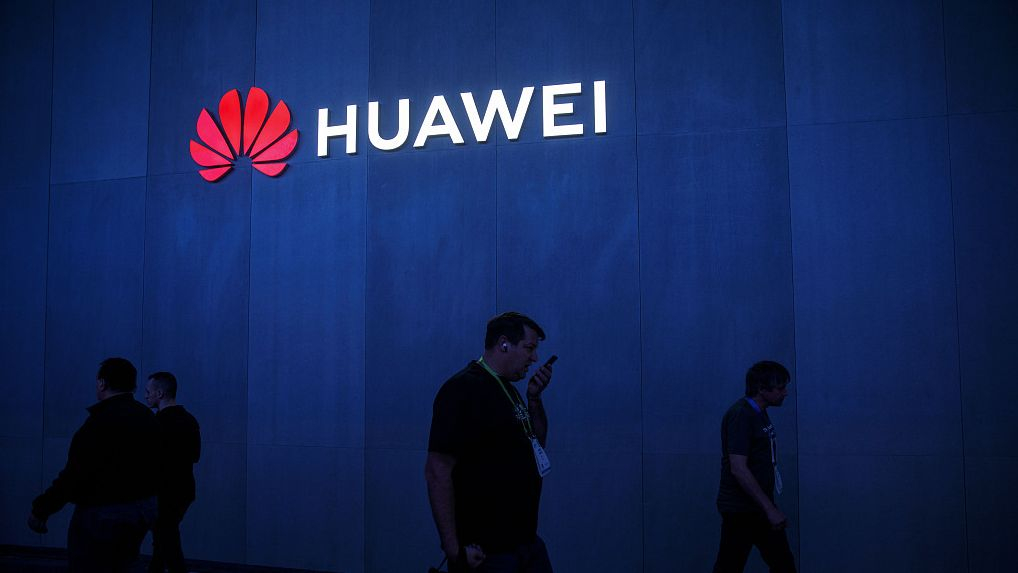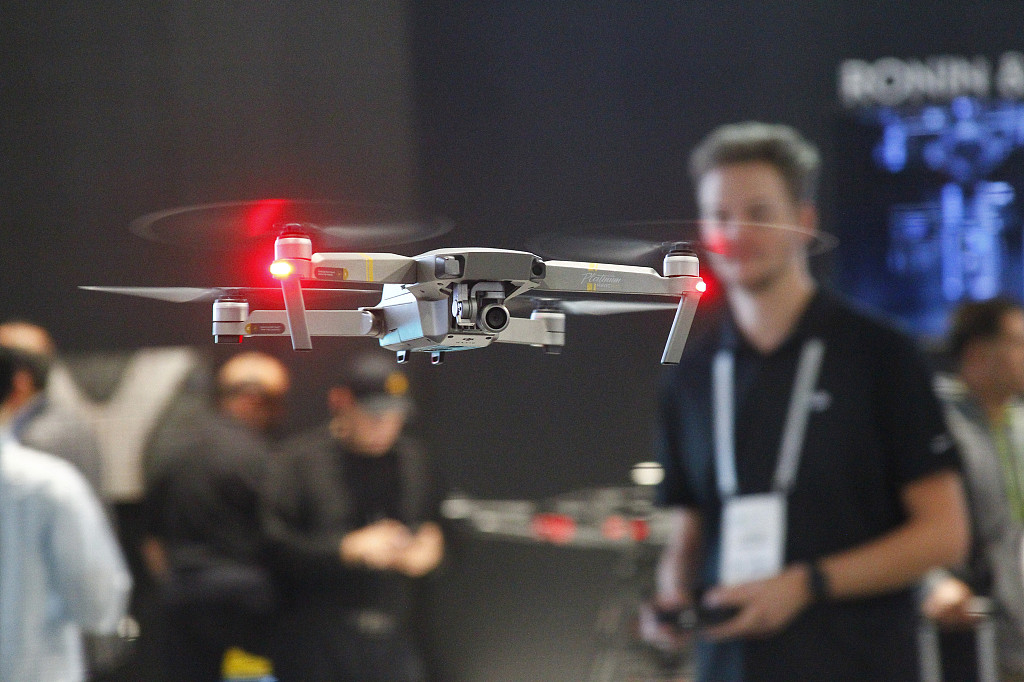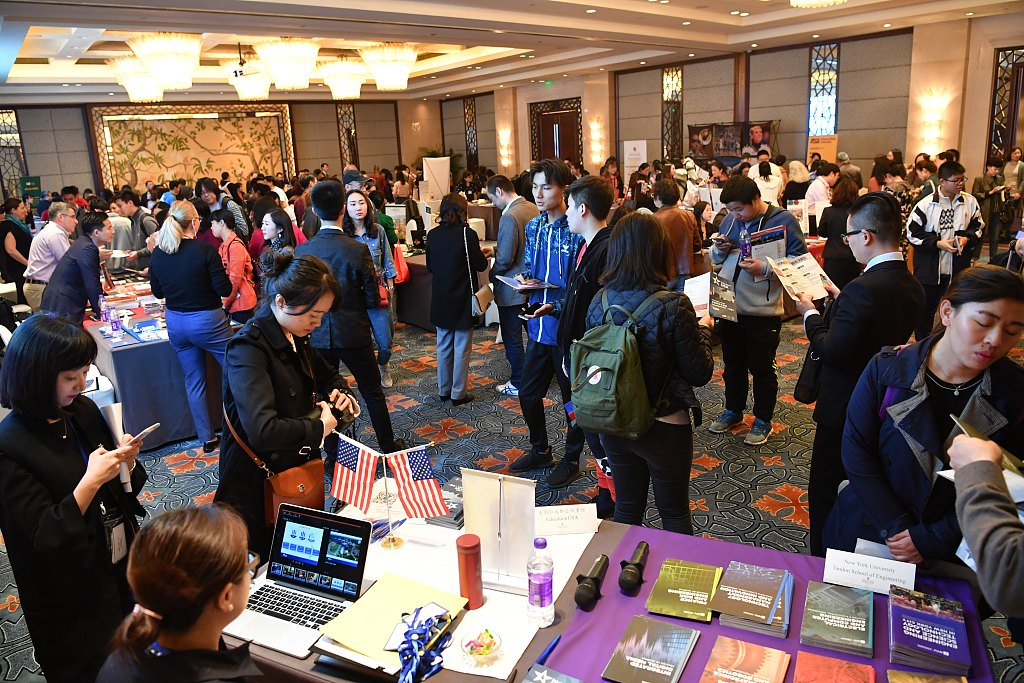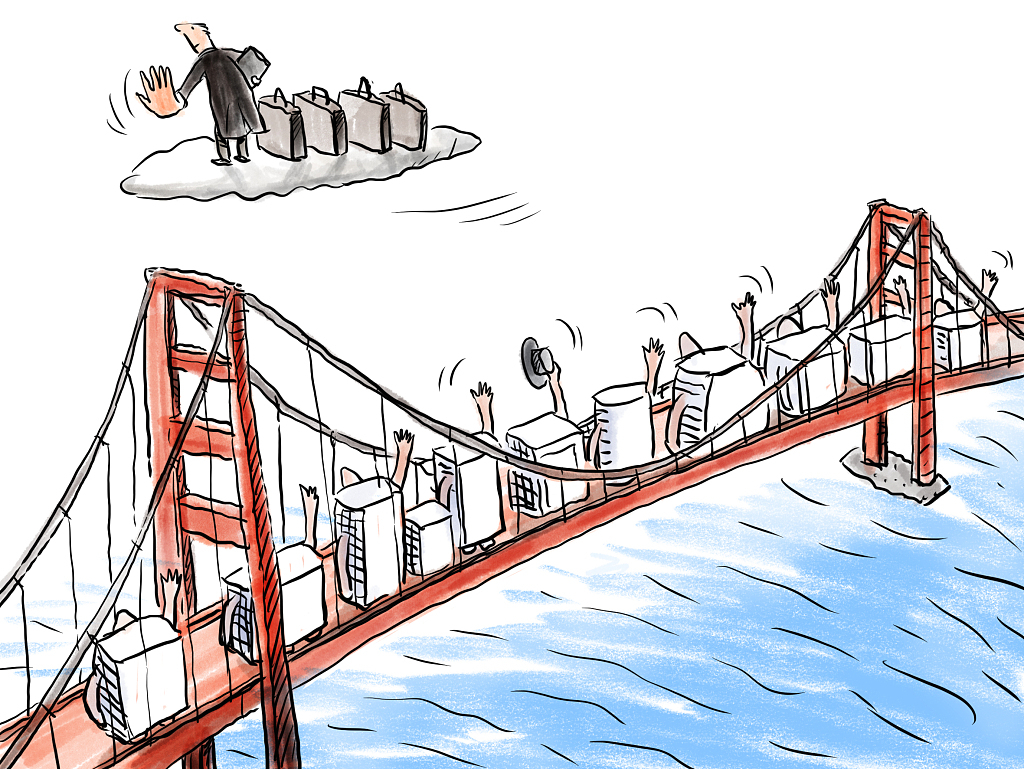
North America
10:52, 05-Jun-2019
Fighting for the tech crown amid China-U.S. trade war
Updated
12:22, 05-Jun-2019
By Yu Jing

President Trump has framed the trade deficit as one crucial reason behind his tariff hike on goods from China. "The United States has been losing, for many years, 600 to 800 billion (U.S.) dollars a year on trade. With China we lose 500 billion dollars. Sorry we are not going to be doing that anymore!" he tweeted.
But the repeated attempts to block Huawei from accessing key components, the increase in Chinese investment in American companies scrapped for security reasons, and export bans to Chinese hardware manufacturers suggest the conflict has grown beyond trade.
At the center of the trade dispute is technology competition, said Dr. Robert Merges, director of the Berkeley Center for Law and Technology, at a recent symposium hosted by Hongfan Legal and Economic Studies.
China is already leading in many of the critical technologies for the future. DJI, the Chinese drone company, now accounts for 70 percent of the worldwide drone market. Chinese companies including Baidu and Tencent are home to some of the world's leading AI research and development.

The Mavic Pro Platinum drone by DJI in flight during the 2018 International Consumer Electronics Show. /VCG Photo
The Mavic Pro Platinum drone by DJI in flight during the 2018 International Consumer Electronics Show. /VCG Photo
Most of the tech inventions that are at the center of the trade war are concentrated in the field of information and communications technology, said Professor Jianzhong Shi, Vice President of China University of Political Science and Law. The competition is about who possesses the patent of the technology as well as who sets the standard in the tech field.
The most prominent example of the U.S.' assault on China's tech advancement is the case of Huawei. Not long ago, the U.S. Department of Commerce started to bar American companies from selling parts and components to Huawei without government approval.
After Huawei was blacklisted by the U.S., the company's memberships with Bluetooth SIG, WiFi Alliance and SD association were temporarily revoked, though later restored. In the latest development, the Institute of Electrical and Electronics Engineers announced that it would reverse its decision of prohibiting Huawei employees from participating in research reviews.
"But it would be unrealistic to expect that things will return to a more peaceful state once we pass the Trump presidency," noted Dr. Merges from the Berkeley Center for Law and Technology. “The conflict has crept into a larger context of knowledge-based expertise of both countries.”
Chinese students of science and technology find it increasingly hard to apply for visas to study in the U.S., and visas of Chinese scientists for conferences and exchanges are delayed.

A U.S. university fair in Chengdu. /VCG Photo
A U.S. university fair in Chengdu. /VCG Photo
Since most of the structures in place that govern the China-U.S. economic relationship were created when China was economically less developed, and were less of a direct competitor to the U.S., the underlying incentive to reconfigure the relationship had already been in place and will survive Trump, added Dr. Merges. For example, the Trans-Pacific Partnership is an example of the Obama administration's attempt to respond to that shift in global power distribution.
In the context of a technologically more advanced China, there are calls in the U.S. for disengagement from China, citing security concerns as the reason.
But disengagement would be a risk for the global tech community, both in Silicon Valley and in Beijing, since the thriving tech scene is built on the basis of transpacific investment and a global supply chain.
According to figures provided by the Rhodium Group, in 2016, Chinese companies invested a record 46 billion U.S. dollars in the U.S., the majority of which were part of acquisitions. But in 2017, that figure dropped to 5 billion, partly the result of a more restrictive review on investments of Chinese origin.
In January 2018, Ant Financial's plan to acquire MoneyGram, a U.S. money transfer service, was rejected by the Committee on Foreign Investment in the United States, on the grounds of data security. Weeks after that, U.S. semiconductor testing company Xcerra was blocked from acquisition by a Chinese semiconductor investment fund.

A cartoon showing Chinese investment leaving the Silicon Valley. /VCG Photo
A cartoon showing Chinese investment leaving the Silicon Valley. /VCG Photo
Since information and communications technology, built on the basis of a global supply chain, is a highly inter-connected worldwide system, disengagement will also hurt the eco-system of tech communities, said Professor Jianzhong Shi, the vice president of China University of Political Science and Law, at the symposium hosted by Hongfan Legal and Economic Studies.
Much of China's manufacturing industry relies on American components that cannot be easily sourced from elsewhere. And Chinese companies are some of the largest customers of American tech firms.
Inadvertently or not, President Trump has attempted to link the trade talks with the fate of Huawei, suggesting that a breakthrough in trade may bring leniency to the Chinese telecommunications company.

Vincent Pang, head of corporate communications at Chinese tech giant Huawei, speaks during a press conference. /VCG Photo
Vincent Pang, head of corporate communications at Chinese tech giant Huawei, speaks during a press conference. /VCG Photo
"The degree to which the president links security and trade makes one question the legitimacy of security issues," said Dr. Mark Cohen, the director of the Asian IP Program at UC Berkeley School of Law. "If it were a national security issue, it wouldn't be linked to trade."
It is thus important to promote principles of containment — institutions use the spirit of negotiation to restrict conflict without affecting the larger economic relationship, said Dr. Merges from the Berkeley Center for Law and Technology. This is why when a trade dispute broke out, countries rely on the WTO for arbitration. Or in the case of an IP dispute, one resorts to IP courts.
Tariffs, on the other hand, are blunt instruments — they hit hard but are not specific in terms of economic effect, he added. By invoking the Section 301 of the Trade Act of 1974, the U.S. sidestepped the arbitration process run by the WTO, thus turning a trade skirmish into a white-hot trade war.
The Trump administration is now on a dangerous path of building a digital iron curtain that separates the world into two. And the American tech community has much to lose.

SITEMAP
Copyright © 2018 CGTN. Beijing ICP prepared NO.16065310-3
Copyright © 2018 CGTN. Beijing ICP prepared NO.16065310-3